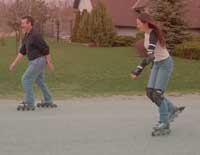
Regular exercise...it’s better than you thought.You have probably heard it since childhood: exercise is good for you. Recent studies suggest that this might be even more true than previously thought. It is common knowledge today that regular weight bearing exercise (e.g., weight lifting) can help stay off the bone loss that often accompanies aging, and that aerobic exercise (any sustained activity that is vigorous enough to get your heart rate up and cause you to break a sweat) is critical to cardiovascular health. Many may have heard that a recent Stanford study found regular exercise to mitigate some of the impact of poor lifestyle factors such as smoking and poor diet. A few more of the many recent findings include:
We’ve seen a surge in such research into aging in the last decade and the accumulating body of scientific knowledge is pointing toward this: Most of the degenerative changes we see in people as they age are not the inevitable result of aging itself, but are due to disuse, misuse, and abuse of our bodies over time. There is every reason to believe that most of us have the option of retaining youthful vigour and optimal health right up to the very twilight of our lives. Regular exercise may well prove to be the most important factor in ensuring this. If you do exercise regularly, congratulations. Perhaps I’ll see you out there when I’m surfing in Kaui in 50 years. If you don’t exercise, why not give it another go? Here are a few guidelines that may help you establish a balanced approach:
Stretching is an excellent way to relax after a long day. When
you begin to discover the true joys of stretching, you may want
to try a few weeks of yoga. (2)The unique and transient impact of acute exercise on pain perception in older, overweight, or obese adults with knee osteoarthritis. Focht, B. C., Ewing, V., Gauvin, L., Rejeski, W. J., Annals of Behavioral Medicine 2002 Summer;24(3):201-210. (3) Reversing sarcopenia: how weight training can build strength and vitality. Evans, W. J., Geriatrics 1996 May;51(5):46-47, 51-53; quiz 54. (4) A 30-year follow-up of the Dallas Bed Rest and Training Study II: effect of age on cardiovascular adaptation to exercise training. McGuire, D. K., Levine, B. D., Williamson, J. W., Snell, P. G., Blomqvist, C. G., Saltin, B., Mitchell, J. H., Circulation. 2001;104:1358.
Copyright © 2002 Phoenix Life-Coaching. |
|



